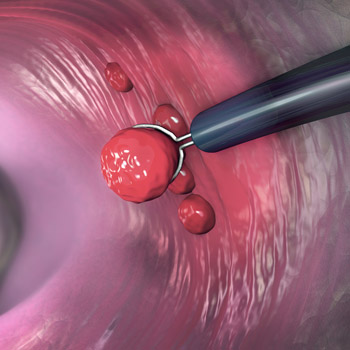MKSAP Quiz: Pain in left great toe
A 70-year-old woman is evaluated for pain in the left great toe that has been present for 5 years and has steadily worsened. The pain is exacerbated by standing for long periods and wearing shoes with higher heels. At times the toe becomes inflamed, and throbbing pain may persist throughout the day and night. Oral and topical NSAIDs do not help. She is otherwise well and takes no medications.

Findings on physical examination are shown. No palpable masses or interdigital clicks are observed when the foot is compressed.
Which of the following is the most likely diagnosis?
A. Avascular necrosis of the metatarsal head
B. Bunion
C. Morton neuroma
D. Stress fracture
Answer and critique
The correct answer is B. Bunion. This item is Question 16 in MKSAP 19's General Internal Medicine section.
The most likely diagnosis is a bunion (Option B). A bunion is a valgus malformation of the great toe that may result in pain and disability. The cause is unknown but has been attributed to wearing shoes with a narrow toe box; however, it can occur in patients who do not customarily wear such shoes. Bunion is diagnosed by inspection of the foot that demonstrates lateral deviation of the toe at the first metatarsal phalangeal (MTP) joint. In some cases, erythema of the joint is observed. A bunion deformity can be associated with several painful complications involving the first MTP joint. The most common cause of pain is bursitis medial to the MTP joint. Other sources of pain may include entrapment of the dorsal cutaneous nerve, synovitis, and generalized metatarsalgia as the patient shifts the distribution of pressure away from the great toe while walking. Radiography is not necessary for the diagnosis of bunion but may be needed to assess for underlying articular damage. Conservative treatment includes orthotic devices, wearing toe separators at night, and analgesics. The evidence supporting the efficacy of these measures is sparse. In some cases of severe pain and disability, surgery may be beneficial.
Osteochondritis of the metatarsal head of the second, third, or fourth MTP joints leading to avascular necrosis (Option A) is known as Freiberg infraction. It presents as plantar pain in the region of the affected metatarsal head. Patients may indicate that it feels like walking with a pebble in the shoe. It is not associated with pain and deformity of the first MTP joint.
Morton neuroma (Option C) most commonly affects the second or third interdigital web spaces. It is associated with localized pain and also with the sensation of walking on a pebble. On examination, there are usually no obvious abnormalities, but some patients may have tenderness to direct palpation of the involved interspace. It is not associated with valgus deformity or MTP joint inflammation.
Stress fractures (Option D) are associated with localized pain but are not associated with joint deformity or inflammation.
Key Points
- A bunion is recognized as a lateral deviation of the great toe at the metatarsal phalangeal joint.
- Bunions can be associated with inflammation and significant pain and disability.



